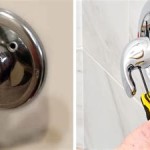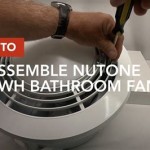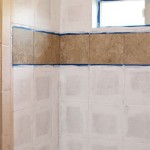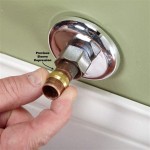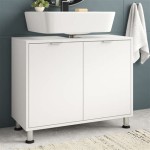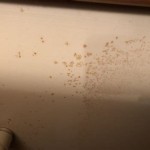Understanding Bathroom Sink Waste Assemblies and Noise Reduction
The bathroom sink, a seemingly simple fixture, is a complex assembly of components working in concert to provide clean water and efficient drainage. A critical yet often overlooked part of this assembly is the waste system, responsible for channeling wastewater from the basin to the main plumbing line. Standard waste systems can often generate noticeable noise during operation, ranging from the gurgling of water draining to the clanging and rattling of components. This noise can be intrusive, particularly in smaller bathrooms or homes where sound insulation is limited.
Innovations in bathroom sink waste assembly designs are increasingly focused on noise reduction. Manufacturers are exploring alternative materials, modifying internal geometries, and implementing dampening mechanisms to mitigate the sound generated during drainage. A "Bathroom Sink Waste B Quieter Than Normal" represents a specific type of waste assembly engineered with these noise-reducing features. This article delves into the various aspects of these quieter waste systems, examining their design principles, materials used, and benefits over conventional models.
Key Point 1: Design Principles for Noise Reduction in Sink Wastes
Conventional sink waste assemblies typically consist of a drain flange, a tailpiece, and a P-trap. The drain flange sits within the sink drain opening and is connected to the tailpiece, a vertical pipe that extends downward. The tailpiece connects to the P-trap, a U-shaped pipe designed to hold a small amount of water, acting as a barrier to prevent sewer gases from entering the bathroom. Noise is generated within this system through several mechanisms.
Firstly, the rush of water down the drain creates turbulence and pressure fluctuations within the pipes. These fluctuations can cause the pipes to vibrate, radiating sound into the surrounding environment. The sound is amplified if the pipes are directly connected to rigid structures, such as walls or cabinets. Secondly, the materials used in the construction of the waste assembly can play a significant role in noise generation. Metal pipes, for example, tend to be more resonant than plastic pipes, amplifying the sound produced by water flow. Finally, the design of the P-trap itself can contribute to noise. Poorly designed traps can create airlocks, leading to gurgling noises as air struggles to escape.
A "Bathroom Sink Waste B Quieter Than Normal" aims to address these issues through several design strategies. One common approach is to incorporate dampening materials into the assembly. These materials, often made of rubber or specialized plastics, absorb vibrations and reduce the transmission of sound through the pipes. Another strategy involves modifying the internal geometry of the pipes to minimize turbulence and pressure fluctuations. Smooth, gradual curves in the tailpiece and P-trap can help to reduce the formation of air pockets and streamline the flow of water, thereby reducing noise.
Furthermore, some quieter waste systems incorporate air admittance valves (AAVs). These valves allow air to enter the drainage system when negative pressure occurs, preventing the siphoning of water from the P-trap and the associated gurgling noises. By maintaining consistent water levels in the trap, AAVs contribute to a quieter and more reliable drainage system. The design and placement of the drain flange also impacts noise levels. Waste assemblies with a smoother drain opening and a tight seal against the sink basin minimize water splashing and associated noise.
Key Point 2: Materials Used in Quieter Sink Waste Assemblies
The materials used in the construction of a sink waste assembly significantly influence its acoustic properties. While traditional waste systems often rely on metal components, such as brass or stainless steel, newer, quieter models frequently incorporate alternative materials designed to minimize noise transmission. These materials typically possess higher damping coefficients, meaning they are more effective at absorbing vibrations and converting them into heat rather than radiating them as sound.
Plastic is a common alternative to metal in quieter sink waste assemblies. Specifically, certain types of engineered plastics, such as acrylonitrile butadiene styrene (ABS) and polyvinyl chloride (PVC), offer good sound dampening properties while also being resistant to corrosion and relatively inexpensive. These plastics are often used in the construction of the tailpiece and P-trap. However, not all plastics are created equal. The density and composition of the plastic material influence its ability to absorb sound. Some manufacturers use composites with varying densities in different parts of the waste system to optimize noise reduction.
Rubber is another material frequently employed in quieter sink waste designs. Rubber gaskets and washers are used to create tight seals between components, preventing leaks and also dampening vibrations. In some cases, rubber sleeves or wraps are applied to the exterior of pipes to further reduce noise transmission. These rubber elements act as a barrier, absorbing vibrations before they can propagate through the surrounding structure. Specialized rubber formulations are available that offer enhanced sound dampening characteristics.
Beyond plastics and rubber, some manufacturers explore the use of composite materials, combining the benefits of different materials to achieve optimal noise reduction. For example, a waste assembly might feature a metal drain flange for durability and a plastic tailpiece and P-trap for sound dampening. The choice of materials ultimately depends on a variety of factors, including cost, durability requirements, and the desired level of noise reduction.
Key Point 3: Benefits of Choosing a Quieter Sink Waste Assembly
The primary benefit of choosing a "Bathroom Sink Waste B Quieter Than Normal" is, as the name suggests, a significant reduction in noise generated during sink operation. This reduction in noise can have a positive impact on the overall ambiance of the bathroom, creating a more peaceful and relaxing environment. This is particularly beneficial in shared bathrooms or homes where noise travels easily.
Beyond the immediate benefit of reduced noise, quieter sink waste assemblies can also contribute to improved overall plumbing system performance. The design features that minimize turbulence and pressure fluctuations can also improve drainage efficiency, reducing the risk of clogs and backups. The use of air admittance valves can prevent the siphoning of water from the P-trap, ensuring that the barrier against sewer gases remains intact. This contributes to a healthier and more sanitary bathroom environment.
Furthermore, quieter sink waste systems often incorporate design features that enhance durability and ease of installation. The use of high-quality materials, such as corrosion-resistant plastics and durable rubber gaskets, can extend the lifespan of the waste assembly and reduce the need for frequent repairs or replacements. Simplified installation procedures can save time and effort during both initial installation and subsequent maintenance. This is especially important for homeowners who prefer to handle plumbing repairs themselves.
Finally, the choice of a quieter sink waste assembly can be seen as an investment in long-term comfort and convenience. While the initial cost may be slightly higher than that of a conventional waste system, the benefits of reduced noise, improved performance, and enhanced durability can outweigh the financial investment over time. A quieter bathroom environment contributes to a more comfortable and enjoyable living space, making it a worthwhile consideration for homeowners seeking to improve their quality of life.

Vigo Matte S Sottile Glass Rectangular Vessel Bathroom Sink In Black With Amada Faucet And Pop Up Drain Vgt1428 The Home Depot

Vigo Matte S Sottile Glass Rectangular Vessel Bathroom Sink In Black With Amada Faucet And Pop Up Drain Vgt1428 The Home Depot

Vigo Matte S Sottile Glass Rectangular Vessel Bathroom Sink In Black With Amada Faucet And Pop Up Drain Vgt1428 The Home Depot

Kohler Bryant Drop In Bathroom Sink White K 2714 1 0 The Home Depot

Vigo Matte S Sottile Glass Rectangular Vessel Bathroom Sink In Black With Amada Faucet And Pop Up Drain Vgt1428 The Home Depot

Vigo Matte Stone Magnolia Composite Rectangular Vessel Bathroom Sink In White With Faucet And Pop Up Drain Brushed Nickel Vgt1230 The Home Depot

Kohler Tahoe Drop In Cast Iron Bathroom Sink White With Overflow Drain K 2890 4 0 The Home Depot

Banging Pipes What The Pros Should Know 2024 07 16 Plumbing Mechanical

Artisan Ceramic Basins By Hastings Tile Bath

Vigo Matte S Sottile Glass Rectangular Vessel Bathroom Sink In Black With Amada Faucet And Pop Up Drain Vgt1428 The Home Depot
Related Posts
